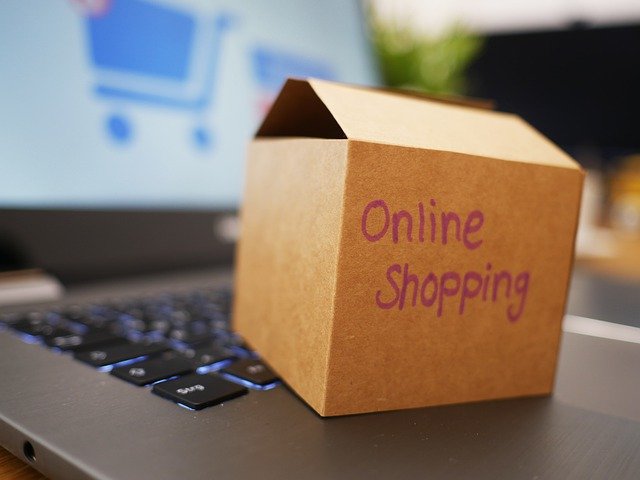By Ryan Tronier
That Bluetooth speaker you picked up a week ago? It suddenly stopped connecting to your phone. And that jacket you bought for your cousin’s wedding reception doesn’t fit like it did in the department store. You know what happens next…
Returning purchases is inconvenient at best, but having to do so in-store is possibly the worst part of shopping for most people. In fact, shopper uneasiness over in-store returns is so significant that many are going to great lengths to avoid it, including fulfilling their needs online.
That’s one of the takeaways from a survey of 2,000 U.S. adults, conducted by OnePoll on behalf of Slickdeals. A whopping 67% of respondents say that returning purchases is the worst aspect of shopping. Furthermore, nearly half of those surveyed (43%) believe in-store returns are worse than online returns. On the flip side, only 29% think returning items online is more difficult.
Indeed, online returns are on the rise. The National Retail Federation (NRF) found that 20% of online purchases were returned in 2021.
What’s more, most of these online shoppers experience buyer’s remorse.
An earlier Slickdeals’ study found that nearly three in four online shoppers regret purchases made online. Moreover, 39% of them end up returning or exchanging these disappointing online purchases.
Why Shoppers Don’t Like In-Store Returns
What don’t people like about returning merchandise directly to a brick-and-mortar retailer? It appears that underlying social anxiety may be the cause.
According to this Slickdeals survey, what shoppers dislike most about in-store returns revolves around face-to-face interactions.
Having the person in front of them escalate the situation: 39%
Getting managers involved in their own returns: 32%
Having to travel to the store: 32%
This friction is understandable. The back-and-forth with retailers can be uncomfortable, especially in person. Some people feel like they have to explain themselves to a sales associate or manager. While others feel pressure to accept store credit or an exchange, in lieu of a refund — which is what 46% of shoppers truly want.
Shoppers Would Rather Give Items Away
Rather than deal with the hassle of returns, some people simply won’t.
The study found that half of shoppers prefer to give unwanted purchases away to friends and family. Others say they usually opt to tuck items away for a rainy day (36%) or resell them (29%).
If they do end up returning an item, nearly half of respondents (48%) said it’s too much trouble to put merchandise back into the original packaging.
Items Worth the Hassle of Returning
Despite the pain points for shoppers, the study identified select spending categories that some respondents felt were always worth the hassle of returning, both in-person and online. These include:
Clothing: 38%
Phones: 38%
Electronics: 37%
By comparison, those surveyed said intimates (25%), groceries (25%) and clothing accessories (24%) are rarely worth returning.
While the Slickdeals survey doesn’t delve into what motivates reluctant shoppers to return unwanted purchases, a recent third-party study shows that the three most common reasons are that an item was a poor fit, was damaged or defective or it didn’t match the description.
How to Reduce the Likelihood of Returns
Even though most people are not enthusiastic about returning merchandise, the NRF estimates that $761 billion worth of goods were returned in 2021, which is up 77% year over year.
Shoppers can avoid becoming a part of this statistic by:
- Doing product research before committing
- Using online forums to discover user-generated reviews from real people
- Patronizing retailers that deploy high-quality images, sizing charts and augmented reality tools on their websites
- Limiting unnecessary impulse buying
Not only is returning unwanted purchases annoying for shoppers, it’s also a hassle for retailers.
A Pitney Bowes survey determined that returns are costing businesses an average of 21% of their order value, leaving some retailers to rethink their return policies. Spanish apparel retailer Zara recently announced its charging a fee for returns in over 30 countries.
“Inevitably we all make purchases that don’t work out for us. Luckily, many retailers have improved return policies to create a more pleasant return experience,” said Louie Patterson, personal finance manager for Slickdeals. “Shoppers can do their part by understanding return policies before they buy. Always check return shipping cost, any restocking fees and return windows before you buy.”
Bottom Line
The majority of shoppers say that returning items is the worst part of their retail experience. So much so, that many are changing their shopping habits to avoid this dreaded task.
Some people opt to give merchandise away or resell it, while others will keep items as a backup — perhaps for gifts.
But with smart shopping strategies, an understanding of store return policies and taking advantage of free online returns, many can minimize the apprehension around returning items, or sidestep returns altogether.
About the author
![]()
Ryan Tronier is a personal finance expert and writer. His work has been published on NBC, ABC, USATODAY, The Mortgage Reports, Yahoo Finance, MSN, and more. Ryan is the former managing editor of the finance website Sapling, as well as the former personal finance editor at Slickdeals. Find him online at ryantronier.com.
Related Articles

7 Employee Benefits That Can Help Your Business Increase Staff Retention
With so many businesses vying for the attention of skilled job candidates, it’s becoming more important to look for ways to make your offerings more appealing by adding unique perks that not every employer does.

How Retailers Can Prepare for the Summer 2025 Shift
Rather than focusing on isolated touchpoints or departmental KPIs, journey management provides a way to understand where the most critical pain points lie and how to resolve them systematically across the business.

Retailers Are Drowning in Data – Journey Management Could Be the Lifeline
Rather than focusing on isolated touchpoints or departmental KPIs, journey management provides a way to understand where the most critical pain points lie and how to resolve them systematically across the business.

How Entertainment is Shaping the Future of Retail Spaces
The traditional retail anchor is being redefined. Large department stores once dominated most shopping centers. Now, concepts like food halls, upscale restaurants, immersive cinema experiences and gaming venues are taking center stage.
By Alexandra Forsch, President, Awin US
Consumers are understandably skeptical about politicians’ and businesses’ efforts towards more sustainable practices. Swedish climate activist Greta Thunberg summed up this collective feeling beautifully with the above response to the 2021 UN Climate Change Conference.
And yet despite the skepticism, sustainable commerce drives more customer choices every day – from where they shop to the specific products and services they choose. According to recent research, 53% of shoppers say sustainability is a driving factor in their purchasing decisions. Furthermore, 73% of Gen Z and 68% of millennials report they are willing to pay more for sustainable goods. These figures make every savvy retail CMO take notice.
As a retailer, how do you appropriately join the sustainability movement? Many well-intentioned companies tread lightly around green topics and eco-commerce initiatives. The challenge with pursuing a sustainability agenda or talking about your ecofriendly practices is the terms can be ambiguous.
Should you be a registered Bcorp? Is it enough to offset carbon footprint by planting trees? Should you only buy local, or is it better you buy from businesses eradicating single-use plastics? These questions are complicated further by accusations of corporate ‘greenwashing.’ And sustainability is just one part of a broader discussion around what it means to be ‘ethical’ today. Environmental concerns coexist alongside other vital social issues: diversity of representation, inclusivity, accessibility.
Transforming to a more sustainable business
For today’s consumers, conscious commercial actions speak louder than words or labels. Shoppers want brands to proactively demonstrate commitments through how they conduct business. They want to see you do.
That said, consumers aren’t looking for a grand gesture. Loose change can enact big change and there are several small steps you can take for great impact.
One way is to collaborate with manufacturers and suppliers to identify ecofriendly products on your shelves and sustainable swaps you can make. In the food and beverage sector, for example, retailers are placing additional focus on ensuring sustainable, local growing practices. And in consumables, several merchants are stocking lower-impact ‘refill’ packages that customers can reuse instead of single-use containers. While this step might seem like a daunting task, it isn’t a shift that needs to happen overnight. Look at leading retailer The Body Shop. Currently, more than 68% of its packaging can be recycled. With a goal to have all products fully-recyclable by 2025, it’s conducting a review of The Body Shop’s whole product portfolio to explore how to increase this percentage in the future – becoming more eco-conscious smartly versus quickly.
Another way to reduce your company’s carbon footprint is across shipping operations. Many brands are collaborating with logistics partners to deliver more sustainably. These innovations include lighter and compostable materials, product packaging that doesn’t require an additional box for shipping, reversible mailer sleeves that double as return packaging and ‘green delivery days’ in which they transport multiple packages at once instead of making a series of trips to the same location.
One final way you could improve your brand’s sustainability is by offering on-premise receptacles to collect disused items (regardless of whether they were initially sold by you) to be recycled or repurposed – especially e-waste, beverage containers and clothing. The partnership between Madewell and Cotton is one successful example of this practice, transforming donated denim into housing insulation and offering customers $20 off a new pair of jeans as a thank you.
The new wave of partnerships
As a for-profit company, becoming a more sustainable enterprise can’t be at the expense of your bottom line. In fact, adopting more ecofriendly practices opens up avenues to connect with that 53% of consumers driven to make sustainable purchases. So how do you reach them?
One of the best ways to engage with this target audience is via affiliate marketing partnerships. A growing number of affiliate partners (think influencers, bloggers, media houses… even cashback sites and coupon portals) specialize in sustainable and eco-conscious topics, curating recommendations of brands aligned with positive values that consumers can trust to buy from. They see the flexible, controllable nature of the performance-based affiliate marketing model affords a chance to monetize traffic with like-minded retailers while fulfilling their missions.
In these partnerships, you and your team collaborate with these trusted authorities by offering a commission for accountable customer sales and leads, creating relationships that reward sustainability partners when they drive business results for you and help fulfill both their mission and yours.
Such partnerships help shoppers feel part of the drive for a more sustainable world. They empower customers to express their values in their everyday purchases. By buying from you, they demonstrate a commitment to a more eco-conscious future. And this ethical ‘alliance’ helps drive increased purchases and shopper loyalty over shared values in how you drive future growth.
Putting a strategy into practice
The first step in pursuing these new eco-partnerships is to acquaint yourself with the many partners anxious to collaborate on a performance basis and whose eco-objectives and equities align with your own.
If you have an affiliate marketing team, they may already be familiar with some of these businesses. Further, your larger marketing team might have someone passionate about these initiatives who can help guide your efforts.
If your company’s sustainability efforts focus on something other than environmental issues, there are partners also supporting other worthwhile causes. For example, you can work on a performance basis with groups that support active-duty soldiers and veterans, promote universal healthcare access, fund better education, empower individual-level charitable giving, etc.
Whatever your goals, there are partners ready to help you take action. They align investment with your values, help your business grow and make your customers not only feel better about the initial purchase they make with you but help keep them coming back for more.
About the author

Alexandra Forsch is president of leading affiliate marketing platform Awin. As a seasoned online marketing professional with over 20 years of experience and a proven record of outperforming corporate goals, Alex has a strong background in performance marketing, media planning and buying, online marketing solutions, strategic and financial planning, team building and client relations. She started her journey with us in 2011 as Head of Account Management for buy.at and quickly progressed to lead the full North America operation, developing a high performing team and successful partner network as well as overseeing the US migration of buy.at to Affiliate Window, and later the rebrand to Awin in 2016. In 2019, Alex was appointed President of all US operations when unifying leadership of Awin and ShareASale, with goals to expand upon our strategic solutions offered to clients across both platforms in North America.



 for the latest news and job opportunities in retail tech
for the latest news and job opportunities in retail tech 